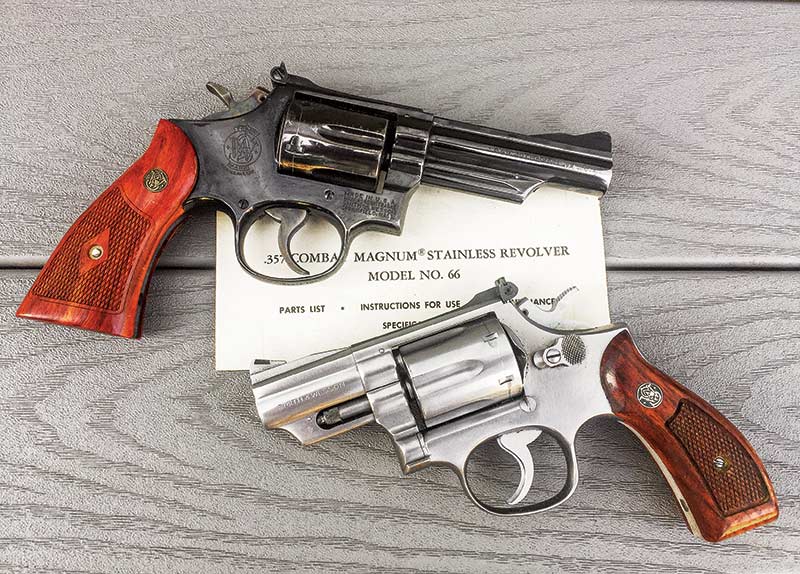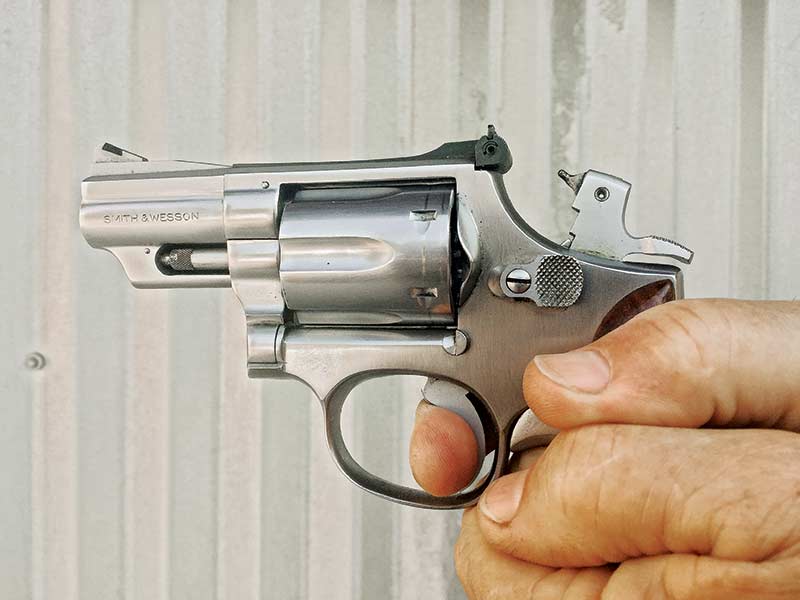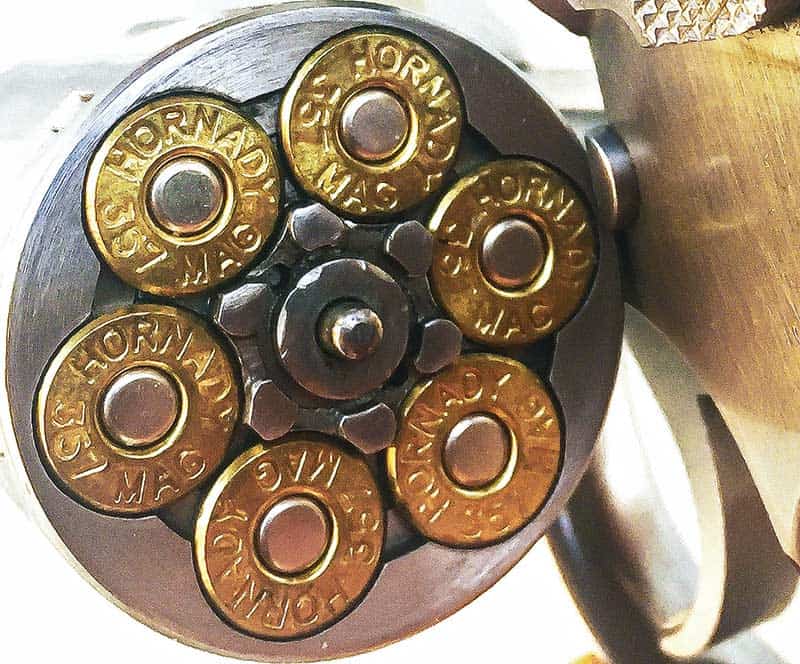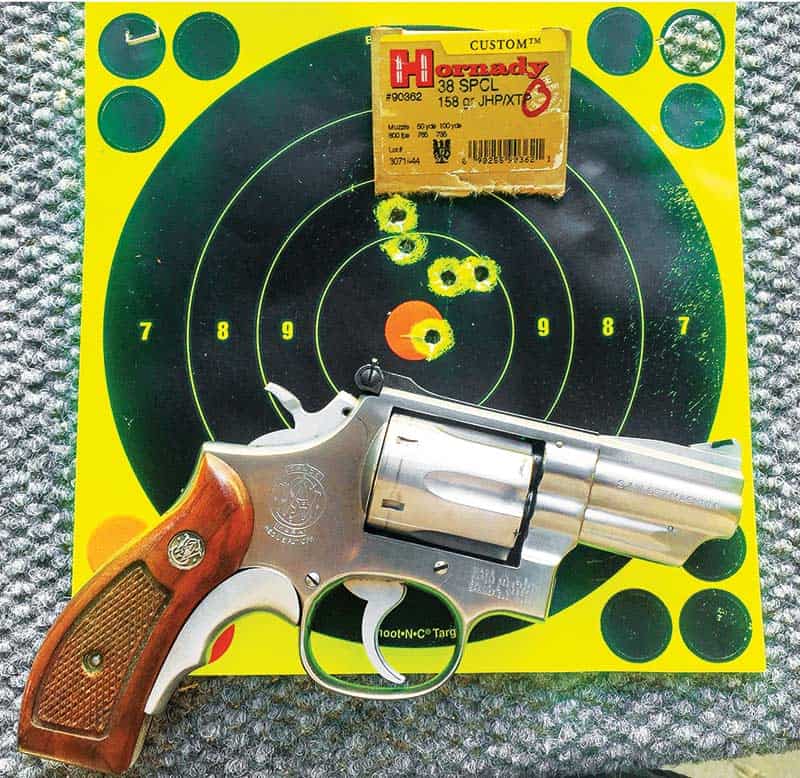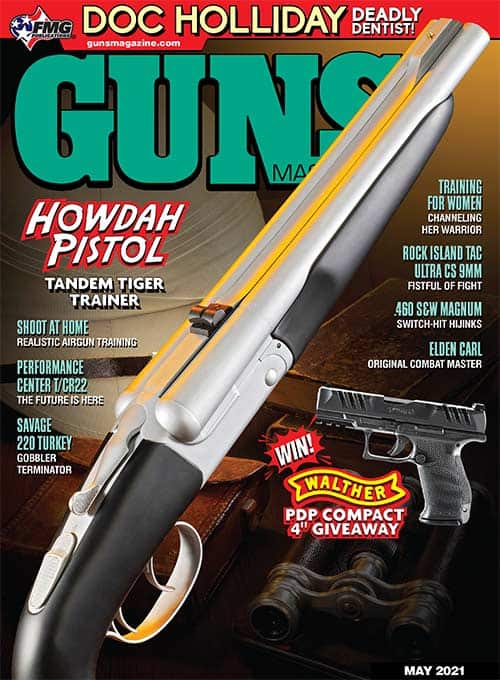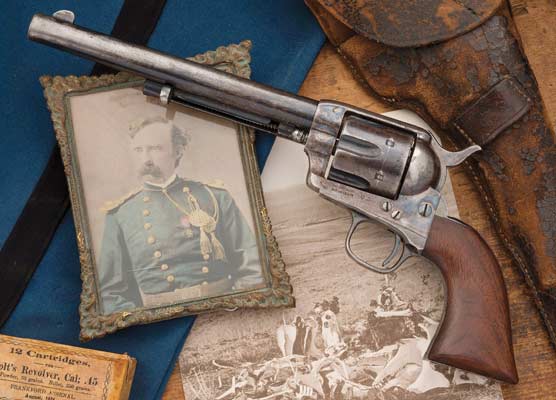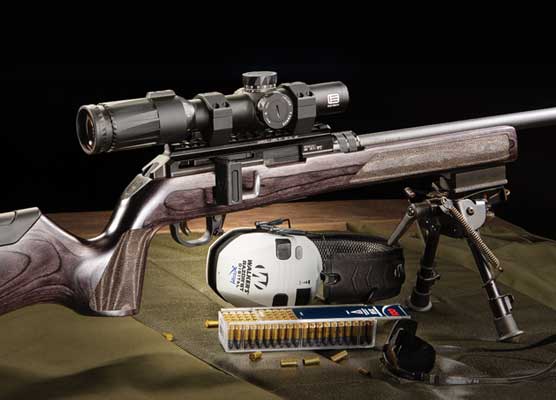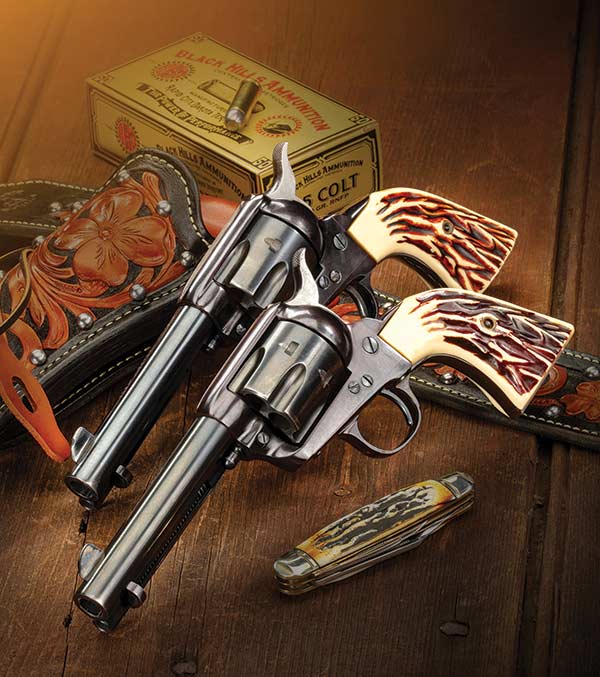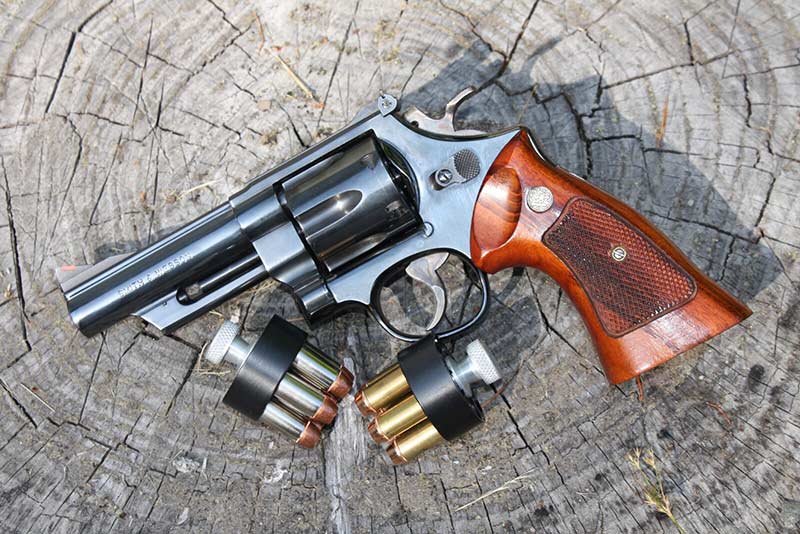S&W Model 66 Snubbie
The ultimate cut-down, concealable K-Frame?
Back in 1957, thanks to the considerable influence and input of legendary wheelgunner Bill Jordan, Smith & Wesson created the template for the medium-frame .357 Magnum. The Model 19 in 4″ square-butt trim quickly become the service sidearm of choice for countless law enforcement agencies. It was, of course, blued and featured excellent adjustable sights. In 1963 a 6″ model was introduced and in 1966, a round butt 2-1/2″ version.
Ultimately, stainless steel began its inexorable rise as the material of choice for revolvers over blued carbon steel. So naturally, the Model 19 “stainlessly” morphed into the Model 66 in 1971 and one extremely useful M66 variant was the 2-1/2″ “snubbie.” Short barreled K-Frames were nothing new — plainclothes officers had been packing 2″ .38 Special M&P/Model 10s well before the groundbreaking 1950 introduction of the smaller J-Frame Model 36 “Chiefs Special.”
The Sum of Its Parts
But the “short 66” offered a few things above and beyond what most previous K-Frame snubbies put on the table: an extra half-inch of barrel for an enhanced sighting radius, easy to acquire adjustable sights, a more concealable round butt, stainless steel construction, and — last but by no means least — a .357 Magnum option. Say what you will about magnum efficiency from a short barrel, we’re still talking here about a significant power increase over the .38 Special. So what about boom, blast and flash? In a word, yes. It’s a factor indeed. Very much so, but that’s the price you’ll pay for more power in an abbreviated package.
Smith & Wesson fanatics are often fixated on “dash-this or dash-that” suffixes for their model number of choice. For the Model 19/Model 66 series, they have an embarrassment of riches from which to choose as the original M66 series alone goes up to dash-8. Each “dash number” indicates mechanical or design changes, often slight, often not so much. The one we’re using here is a 66-1 (1977-1982). It has a pinned barrel, recessed chambers and a hammer-mounted firing pin.
The pinned barrel and recessed chambers would be gone with the 66-2. The hammer mounted firing pin would be gone with the dash-5 advent in 1998. There are other mechanical changes spanning the original production run of the M66 but the three I’ve mentioned are what make the 66-1 desirable to me personally. Not for any hardcore technical reason I could enunciate anyway, but simply for the fact I just think they’re cool.
The Letter “K”
A good K-Frame .357 is still a pretty good choice, although if concealability is a serious factor, you’ll probably want a J-Frame. And, if heavy magnum use is what you envision, you’ll probably be happier with an L- or N-Frame.
Me? The older I get, the more a K-Frame snubbie suits my fancy. My fine-motor skills seem now to be attuned more to larger guns than the J-Frames I’ve been shooting for so long. And, sad as it makes me, manipulating larger speedloaders and magazine release latches are a bit less, well, complicated and I simply don’t see the sense of going to an L- or N-Frame if I’m not serious about high-volume magnum use. Which I am not.
Dealing with the Magnum Option
As you may have guessed, I don’t really enjoy shooting full-boat .357s much out of anything in the way of handguns, let alone a cherry old K-Frame. However, if you really feel the need to exceed Plus-P .38s and are allergic to high blast levels, there are .357 alternatives that are less likely to bang you — or your gun — up on a steady diet.
The original https://www.remington.com Golden Saber 125-grain Brass Jacketed HP clocked around 1,250 fps, on par with Hornady’s new 130-grain Monoflex load. Yes, it’s below what you’ll be getting from those blistering 125s at 1,450–1,500 fps but essentially, they’re like a “triple Plus P” .38 and I’ve found them to be pretty accurate out of just about any barrel length. Out of a 2-1/2″ barrel, they’re still running around 1,100 fps — “medium stout” for a snubbie but more controllable than those 125-grain full-house screamers.
If you prefer something heavier than 125 grains, an excellent choice for the 2-1/2″ M66 is Buffalo Bore’s
Fans
I’m certainly not alone in my appreciation for the 2-1/2″ M66. Sheriff Jim Wilson is a fan of the original blued M19 version although I’m hesitant to opine whether or not he has the same affection for the M66 stainless. However, he’s the first serious gun guy who explained to me why this great K-Frame magnum snubbie makes so much sense.
On the subject of controllability, I’m a big fan of Tyler-T grip adapters on the round-butt M66. They help me index the gun properly at “first grab” without having to consciously alter my grip, and they do a good job in preventing the gun from trying to climb out of my strong hand in recoil. Plus, they don’t interfere with the use of HKS speedloaders.
Although shooting a 2-1/2″ barreled revolver has its challenges, this particular 66-1 has an excellent trigger (thanks to an S&W Performance Center tuneup nearly 20 years ago). The single-action pull is 2.5 lbs.; the double-action a shockingly smooth 9 lbs. This, plus the excellent adjustable sights, yielded 5-shot groups at 25 yards at just under 2″ using Hornady’s standard-pressure 158-grain JHP/XTP .38 Specials. Things opened up a bit with Hornady’s considerably hotter 125-grain XTP .357 Magnums — but this was more than likely due to an “overmatched operator.” Buffalo Bore’s Heavy Plus P 158-grain .38 Specials split the difference between the two Hornady offerings.
A few years back, S&W resurrected the Model 66 as the M66 Combat Magnum, featuring a slightly longer two-piece 2-3/4″ barrel and longer ejection rod for better ejection of spent brass, plus a ball-detent lockup to address concerns over longevity with magnum loads. Pretty sensible and welcome improvements to be sure.
But the 66-1 is the original that got the ball rolling.
